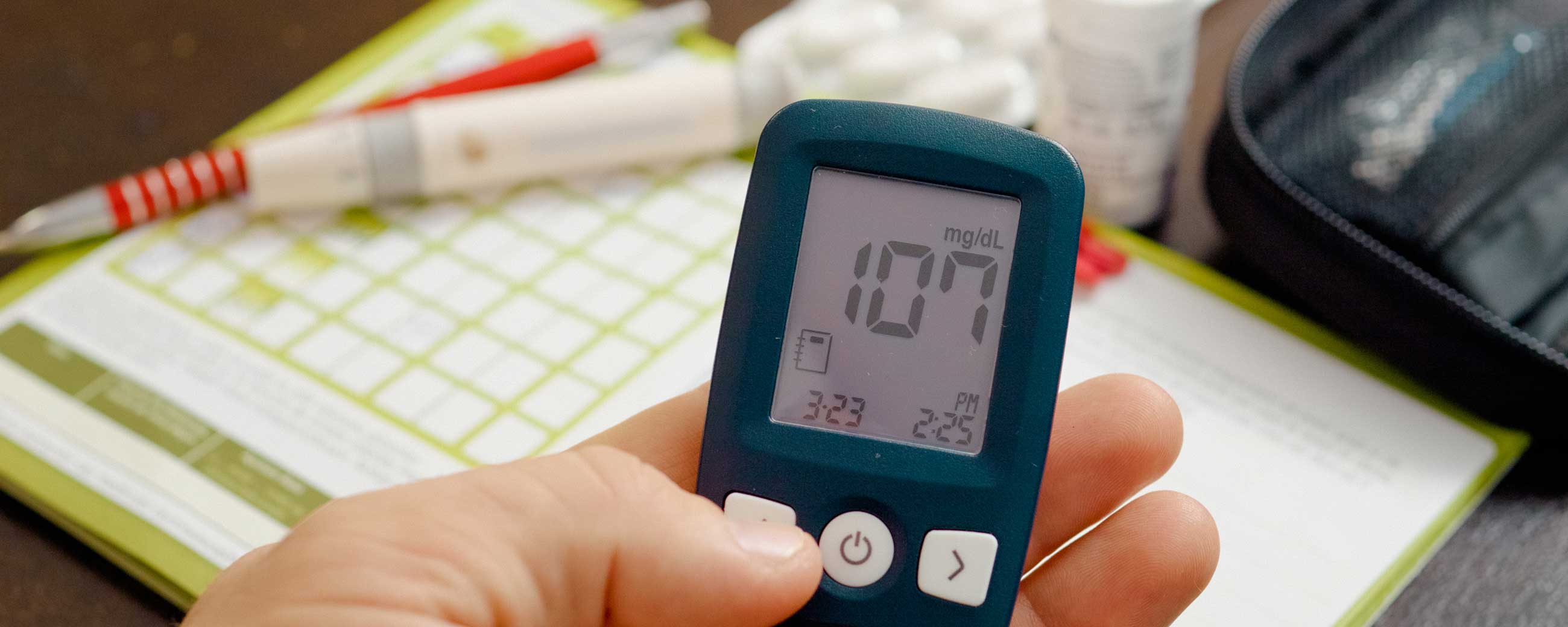
CGMs and Diabetes: What You Need To Know

Reviewed by Virta Medical Affairs.
Technology is changing the face of diabetes care. The latest thing to gain popular traction is the continuous glucose monitor (CGM), which provides a 24-hour granular display of your glucose level ups and downs.
While the Virta program does not directly integrate CGMs into our app experience, we know many of our members have questions about them. How does a continuous glucose monitor work, how does it differ from finger pricks or other methods of measuring blood sugar, and how can a CGM help you live a healthier life with diabetes?
Here’s what you need to know about CGMs.
What is a CGM for diabetes?
The most common way for people with diabetes to check their blood sugar is through a finger stick blood test. A drop of blood is placed on a test strip inserted in a reader device, which then gives an estimate of your glucose, or blood sugar, level.
Unlike a finger stick test, which has to be done manually every time a person with diabetes wants to know their current blood glucose level, CGMs report that information every few minutes.That lets users have greater insight into their glucose patterns: for example, how much their glucose level might be affected by eating a favorite meal, going to the gym, or taking their insulin.
How does a CGM work?
Modern CGMs consist of a sensor, transmitter and a monitor or reading device that receives the information. The sensor contains a very small, thin needle that is inserted just under the skin and contains a tiny electrode. This measures glucose levels in the interstitial fluid, which is the fluid that surrounds the cells of the body.
Measurements are taken every few minutes and through a transmitter, a small device that attaches to the sensor, readings are sent to the receiving device–a smartphone app, smart watch, insulin pump, or dedicated receiver.
All of the major CGM models on the market right now are water resistant, so showering and bathing with them on is fine.
What are the advantages and disadvantages of a CGM?
The biggest benefit of wearing a continuous glucose monitor is getting a new perspective. By using reports to view trends and patterns you can better understand how your diet, activity, stress and medication patterns affect your glucose levels over time.
Another benefit of CGMs is they can alert patients and caregivers in real-time when glucose levels fluctuate out of an acceptable range. This alarm functionality can be useful for people with more volatile glucose, enabling them (for example) to wake up and treat dangerous lows at night. Certain models of CGMs also integrate with insulin pumps, allowing them to automatically adjust insulin dosing levels for greater precision throughout the day.
Commonly cited disadvantages of CGMs include the fact that they are less accurate in detecting sudden drops in glucose levels, having a lag time of around 10 minutes compared to finger stick blood glucose readings. They also tend to be less accurate and read low compared to finger sticks test, requiring that you confirm any concerning glucose reading with a finger stick test.
In addition, the filament that is inserted beneath the skin can also be uncomfortable. Some users report alarm fatigue and information overload with CGMs, leading them to treat the data less seriously or ignore it. Finally, many insurance plans also do not fully cover continuous glucose monitors, and the out-of-pocket costs can be quite high.
The Takeaway
If you’re interested in a more complete picture of how your behaviors influence your glucose levels, talk to your doctor about whether a CGM is right for you. However, a CGM is not the only way to live a healthier lifestyle. If you have been diagnosed with prediabetes, type 2 diabetes, or obesity, Virta Health may be able to help. By making healthy lifestyle changes in a medical setting with supportive resources like 1:1 virtual coaching, you can regain control of your health and feel like yourself again. See if you’re eligible for Virta Health here.
This blog is intended for informational purposes only and is not meant to be a substitute for professional medical advice, diagnosis, or treatment. Always seek the advice of your physician or other qualified health provider with any questions you may have regarding a medical condition or any advice relating to your health. View full disclaimer
Are you living with type 2 diabetes, prediabetes, or unwanted weight?








